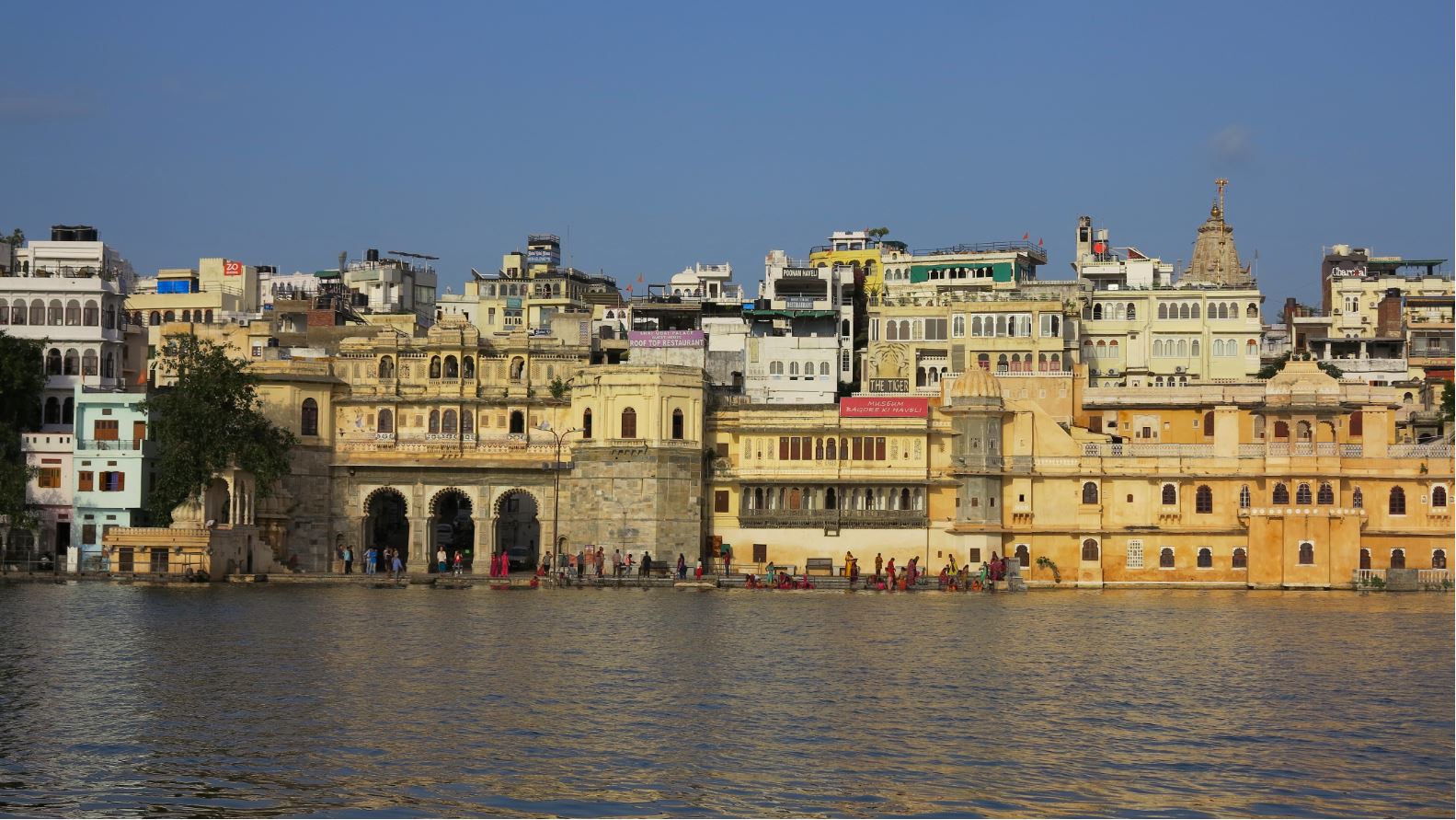Udaipur, often referred to as the “City of Lakes,” is a remarkable blend of natural beauty and man-made marvels. The city’s architecture is a vivid reflection of Rajputana grandeur, showcasing a rich heritage that spans centuries. Known for its intricate palaces, historic temples, and serene ghats, Udaipur offers an architectural journey unlike any other. This guide delves into the city’s architectural brilliance, emphasizing its unique features and historical significance.
What Makes Udaipur’s Architecture Unique?
Udaipur’s architecture stands apart due to its fusion of Rajput, Mughal, and local styles. The city’s strategic location amidst the Aravalli Hills provided a natural defense, influencing the construction of fortified structures. Additionally, the abundant use of marble, intricate carvings, and symmetrical designs highlight the craftsmanship of the bygone era.
Key elements that define Udaipur’s architecture include:
- Waterfront Palaces: Many structures are built on lakefronts, creating stunning reflections on the water.
- Intricate Facades: Detailed carvings and jali (lattice) work are hallmarks of Rajputana art.
- Elevated Fortifications: The city’s forts are perched on hills, offering panoramic views and strategic advantages.
The Iconic City Palace: A Jewel of Udaipur
The City Palace of Udaipur, one of the largest palace complexes in Rajasthan, is a masterpiece of Rajputana architecture. Built over 400 years by several rulers of the Mewar dynasty, it exemplifies the grandeur of Udaipur.
Key Features of the City Palace:
- Mor Chowk: Known for its exquisite peacock mosaics.
- Sheesh Mahal: A dazzling hall adorned with mirrors.
- Badi Mahal: The garden palace situated on a 90-foot-high rock.
- Zenana Mahal: The women’s quarters featuring intricate designs.
The City Palace also houses museums that preserve artifacts from Udaipur’s royal past, giving visitors a glimpse into the city’s rich history.
Lake Palace: A Floating Marvel
Another architectural gem is the Lake Palace, located on Jag Niwas Island in Lake Pichola. Constructed in the 18th century by Maharana Jagat Singh II, this palace appears to float on water, creating a surreal and picturesque scene.
Architectural Highlights:
- Made of white marble, enhancing its ethereal appearance.
- Surrounded by the serene waters of Lake Pichola, offering breathtaking views.
- Symmetrical courtyards adorned with fountains and gardens.
The Lake Palace is now a luxury hotel, but its original design and architecture continue to captivate visitors from around the world.
Jag Mandir: The Island of Tranquility
Jag Mandir, another island palace on Lake Pichola, showcases the artistry of Rajput architecture. Built as a summer retreat, it also served as a refuge for Prince Khurram (later Emperor Shah Jahan) during his revolt against his father.
Key Features:
- Garden Courtyards: Lush greenery and fountains enhance the palace’s charm.
- Marble Sculptures: Elephants and other decorative elements highlight the craftsmanship.
- Octagonal Pavilion: Adds to the palace’s unique design.
Jag Mandir is a testament to the harmonious blend of aesthetics and functionality in Udaipur’s architecture.
The Fortifications of Udaipur
Udaipur’s forts, though not as prominent as its palaces, play a crucial role in showcasing the city’s strategic and architectural acumen.
- Kumbhalgarh Fort: Known for its massive walls stretching over 36 kilometers, this UNESCO World Heritage Site is an architectural marvel.
- Sajjangarh Palace (Monsoon Palace): Built as a vantage point to observe monsoon clouds, it offers a panoramic view of the city and surrounding lakes.
These forts highlight the defensive strategies and engineering expertise of the Rajputs.
Temples in Udaipur: Spiritual and Architectural Wonders
Udaipur is home to several temples that are architectural masterpieces in their own right. These temples combine spirituality with intricate design, offering a peaceful retreat for visitors.
- Jagdish Temple: Dedicated to Lord Vishnu, this 17th-century temple is renowned for its carved pillars, ornate ceilings, and graceful statues.
- Eklingji Temple: Located a short drive from Udaipur, this temple complex consists of 108 shrines, showcasing intricate stonework and devotion to Lord Shiva.
- Neemach Mata Temple: Perched on a hill, it provides a panoramic view of the city and a serene environment for meditation.
The Role of Lakes and Ghats in Udaipur’s Architecture
Udaipur’s lakes and ghats are integral to its architectural identity. The city’s planners utilized natural water bodies to enhance its aesthetic and functional appeal.
- Lake Pichola: The most famous lake in Udaipur, surrounded by architectural marvels like the City Palace and Lake Palace.
- Fateh Sagar Lake: Known for its artificial islands and the Nehru Garden.
- Ambrai Ghat: A popular spot for sunset views and a reflection of Udaipur’s majestic skyline.
These elements not only contribute to the city’s beauty but also reflect the ingenuity of its architects in harmonizing nature and construction.
Exploring Udaipur’s Architecture with Ease
Navigating Udaipur’s architectural wonders is a rewarding experience, and getting around the city is made simple with services like Udaipur Taxi Service. These services provide reliable transportation to key attractions, ensuring you don’t miss any of the city’s architectural highlights.
For those seeking flexibility and comfort, Taxi Service in Udaipur offers tailored solutions to explore the city at your own pace.
Preserving Udaipur’s Architectural Legacy
Efforts are being made to preserve Udaipur’s architectural heritage for future generations. Initiatives by local authorities and conservation groups focus on restoring historic structures, promoting sustainable tourism, and educating visitors about the city’s cultural significance.
Conclusion
Udaipur’s architecture is a living testament to the grandeur and ingenuity of the Rajputana era. From majestic palaces and serene lakes to fortified forts and sacred temples, the city’s architectural heritage offers a captivating glimpse into its royal past. Whether you’re an architecture enthusiast or a casual traveler, exploring Udaipur’s treasures is a journey into history and artistry, making it a must-visit destination for anyone seeking cultural enrichment.

